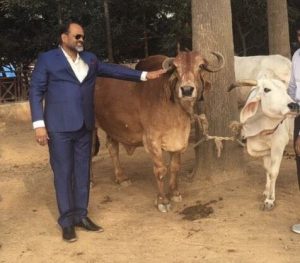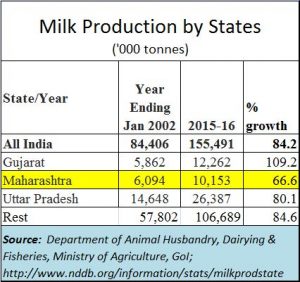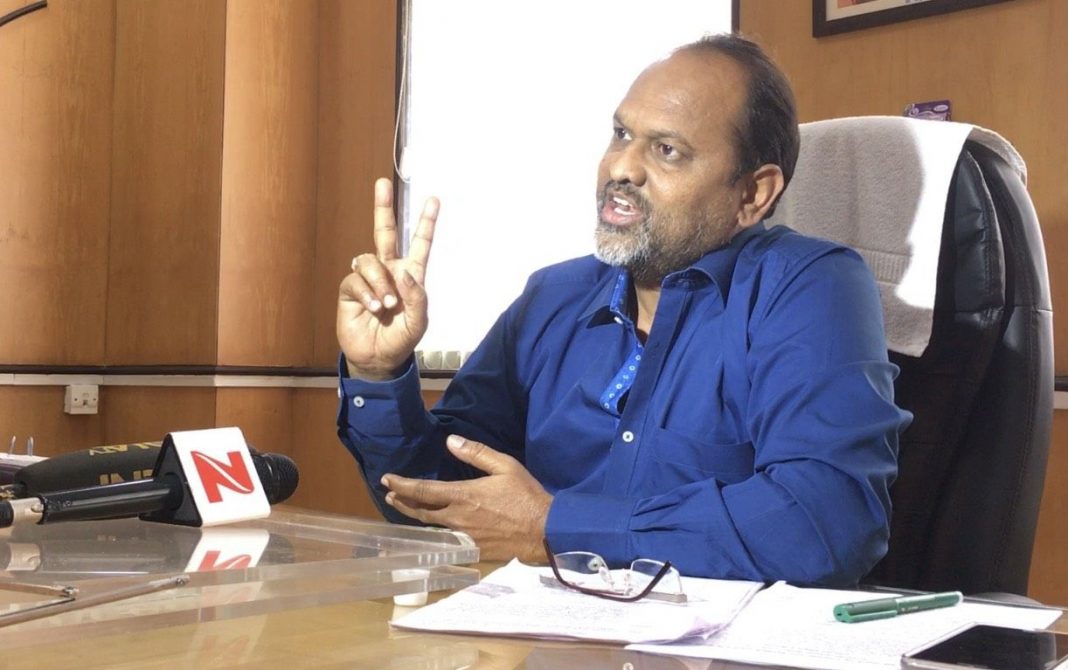http://www.firstpost.com/business/maharashtras-rural-revolution-i-make-way-up-and-gujarat-state-aims-to-be-the-countrys-no-1-milk-producer-3467222.html
Maharashtra focusses on milk
RN BhaskarMay, 22 2017 13:24:54 IST
(This is the first in a two-part series about the Maharashtra government policies for rural development. The second part can be found at http://www.asiaconverge.com/2017/05/maharashtra-promotes-livestock-poultry-fisheries-as-well/)
If the government of Maharashtra has its way, this state could become the largest milk producer in the country within a few years’ time. This could mean that Uttar Pradesh could be gently nudged aside, and so could Gujarat. “Currently, Maharashtra is Number 7 among milk producing states in the country. I plan to make it Number One,” says, Mahadev Jankar, Maharashtra’s Minister of Animal Husbandry, Dairy Development and Fisheries (see chart below).
 In fact, he has already begun making moves that have all the state’s cooperatives in a funk. A fortnight ago, he issued directives to all the cooperatives in the state to sell the milk produced by them directly to the state government. The reason? It is the state that gives the cooperatives land and grants. The state offers it many facilities as well. Yet, many milk producers prefer to sell their milk to brands like Nandini (from Karnataka) and Amul (from Gujarat).
In fact, he has already begun making moves that have all the state’s cooperatives in a funk. A fortnight ago, he issued directives to all the cooperatives in the state to sell the milk produced by them directly to the state government. The reason? It is the state that gives the cooperatives land and grants. The state offers it many facilities as well. Yet, many milk producers prefer to sell their milk to brands like Nandini (from Karnataka) and Amul (from Gujarat).
Moreover, many cooperatives have tried to create their own brands and their own marketing setups which has made the entire milk operational costs for these cooperatives much higher than it ought to be. For instance, Maharashtra has around 80 brands. Having 80 brands means replicating marketing and brand building costs 80 times. Market shares shrink. Markets become fragmented. Not surprisingly, all the brands in this state have remained stunted.
 Another offshoot of this fragmented approach was to meet these costs from money that should have gone to farmers. Thus, while Gujarat’s cooperatives were paying their farmers anywhere between Rs.26-31 per litre, Maharashtra’s cooperatives were paying farmers just Rs 18-20. This low payment to farmers resulted in unfortunate consequences. Since the farmers were not being paid enough, they did not acquire more cattle. And the other consequence was the inevitable disenchantment with cooperatives, because they felt that they were being cheated. Since the entire milk distribution network (as well as farm produce networks of APMC) were controlled by people very closely connected with cooperatives, the bitterness that small farmers felt was inevitable.
Another offshoot of this fragmented approach was to meet these costs from money that should have gone to farmers. Thus, while Gujarat’s cooperatives were paying their farmers anywhere between Rs.26-31 per litre, Maharashtra’s cooperatives were paying farmers just Rs 18-20. This low payment to farmers resulted in unfortunate consequences. Since the farmers were not being paid enough, they did not acquire more cattle. And the other consequence was the inevitable disenchantment with cooperatives, because they felt that they were being cheated. Since the entire milk distribution network (as well as farm produce networks of APMC) were controlled by people very closely connected with cooperatives, the bitterness that small farmers felt was inevitable.
Contrary to the belligerent and shrill cries of some parties – especially the Shiv Sena and the Congress – the present government does not believe in loan write-offs which have penalised the honest and taught them to become dishonest. The state government realised that a better way to reward farmers was to take them out of the clutches of cooperatives and pay them more than what they used to get. So, Jankar’s ministry decided to pay Rs 24 a litre for cows’ milk and Rs 33 per litre for buffaloes’ milk.
It all started on 17 October, 2016, when the Fadnavis government decided to enter into a pact with NDDB to set up a processing plant in Vidarbha, and set up milk collection centres around that region. The MoU between the state government and NDDB envisaged an investment outlay of at least Rs 230 crore. The first procurement at higher prices began almost six months ago. Then, with periodic increases in prices, the final price currently being offered is Rs 24 for cow’s milk and Rs 33 for buffalo’s milk.
The result has been electrifying. Farmers decided to switch loyalties from the cooperatives which paid them less to the state government. Compared to the 90,000 litres of milk that the government procured before Jankar assumed charge of this ministry, the state currently collects over 11 lakh litres a day. “Ï have a target reach a collection of two crore litres (an increase from 1.1 tonnes a day to 20 tonnes per day). I hope to do that within the next 7-8 months,” adds Jankar. “We have invested around Rs 750 crore in this business, and are already very active in 11 districts. In a short time, we shall cover all districts.”
In one fell swoop, Jankar dispelled any thoughts that some politicians had about making a land grab for the vast lands that Aarey and Mahanand Dairies had.
Jankar has now decided to promote two brands under Aarey – Aarey Bhushan and Aarey Shakti. The former will be a premium product and will be charged a premium price as well. The latter would be the regular milk that people consume. “Our plan is to focus on the premium brand, and use the proceeds to give the farmers a price that is higher than Rs 31. If possible, we would like to double the price to farmers even from the current level,” he adds.
Meanwhile, just around a fortnight ago, Jankar’s ministry sent a directive to all milk cooperatives in the state to sell their milk within the state and not to milk distributors outside the state. The cozy deal that cooperatives had with Amul and Nandini is sought to be broken.
With higher prices that are being offered by the state government on the one hand, and the directive forbidding Maharashtra’s milk cooperatives to sell milk outside the state, many cooperatives are in a state of funk. Most of these cooperatives are owned by either the NCP or the Congress. This has squeezed their cashflows considerably.
Behind this revamping of the state’s milk production, processing and distribution business, there are obviously some very canny political objectives in mind. First, the increase in milk prices helps fulfil the prime minister’s stated vision of doubling farm income by 2022. The PM used this strategy in UP as well (http://www.asiaconverge.com/2017/01/uttar-pradesh-elections-budget-2017-and-milk-leather/ and http://www.asiaconverge.com/2017/01/budget-2017-uttar-pradesh-elections-and-agriculture/). Through milk procurement pricing alone, a good part of this objective is being achieved. Secondly, at a time when both the Congress and the Shiv Sena have been criticizing the government for being farmer unfriendly, the BJP is out to show farmers that it is bring back dignity into their lives, by making them profitable and capable of standing on their feet, and not living on doles.
And milk is not the only strategy that is being used.
It is being used in the areas of building cow shelters for old and non-lactating cows, accelerating poultry farming and fisheries. The bugle has been blown. The war for the farmers’ hearts has begun more fiercely than ever before. But more on that later.
(Part II: How Jankar has equally big plans for cow shelters, Animal Care Centres, rearing of goats and pigs, poultry and fishery)







































COMMENTS